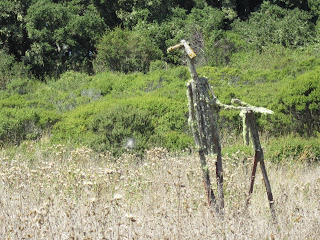 |
| I even got to sample the beans -- which, as you can see above, are unusual in their white color |
The find was remarkable for several reasons. First, Nacional beans are not normally associated with Peru. Rather, this bean predominates in Ecuador, where it is most often associated with the Arriba strain (see Jeff Stern's recent post on The Chocolate Life for an excellent discussion of Arriba Nacional). So finding it in Peru was a bit of a surprise.
Indeed, finding pure Nacional anywhere is cause for celebration. Disease has wiped out much of the Nacional crop over the past century. Cocoa is a fragile tree, susceptible to fungal infections and pests that can devastate entire national agricultural systems, such as happened in Ecuador. To make it more disease- and pest-resistant, cocoa is often hybridized. The result is higher yields, but also loss of purity of strains such as Nacional, whose distinct flavor is eroded when crossed with another kind of bean.
Thus, the discovery of genetically "pure" Nacional -- and in Peru no less -- made headlines. I have been anxious to taste it. The cocoa actually arrived to me yesterday (still up here on the Djerassi mountain), but I forced myself to wait until this morning to try it, when my taste buds were clear.
The verdict: some of the most delicately flavored chocolate I have sampled, ever. Fortunato #4 was wispy and light as a feather, and so creamy I had to keep reminding myself that it was not a bar of milk -- in fact, it was 68% cocoa solids. Its flavor was so fleeting, I had to keep eating more.
If you want to taste it yourself, here's where you can find it. If you do, let me know what you think!














